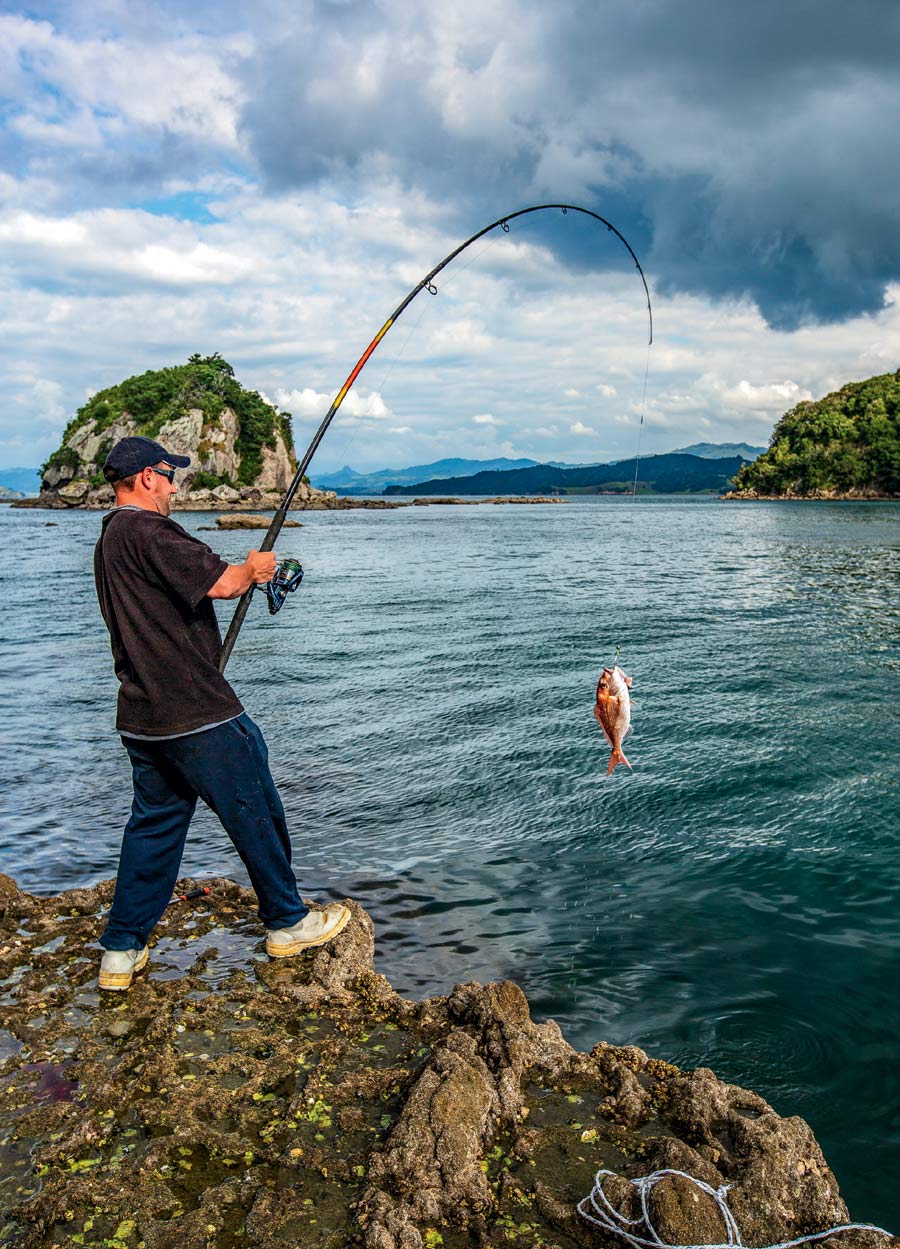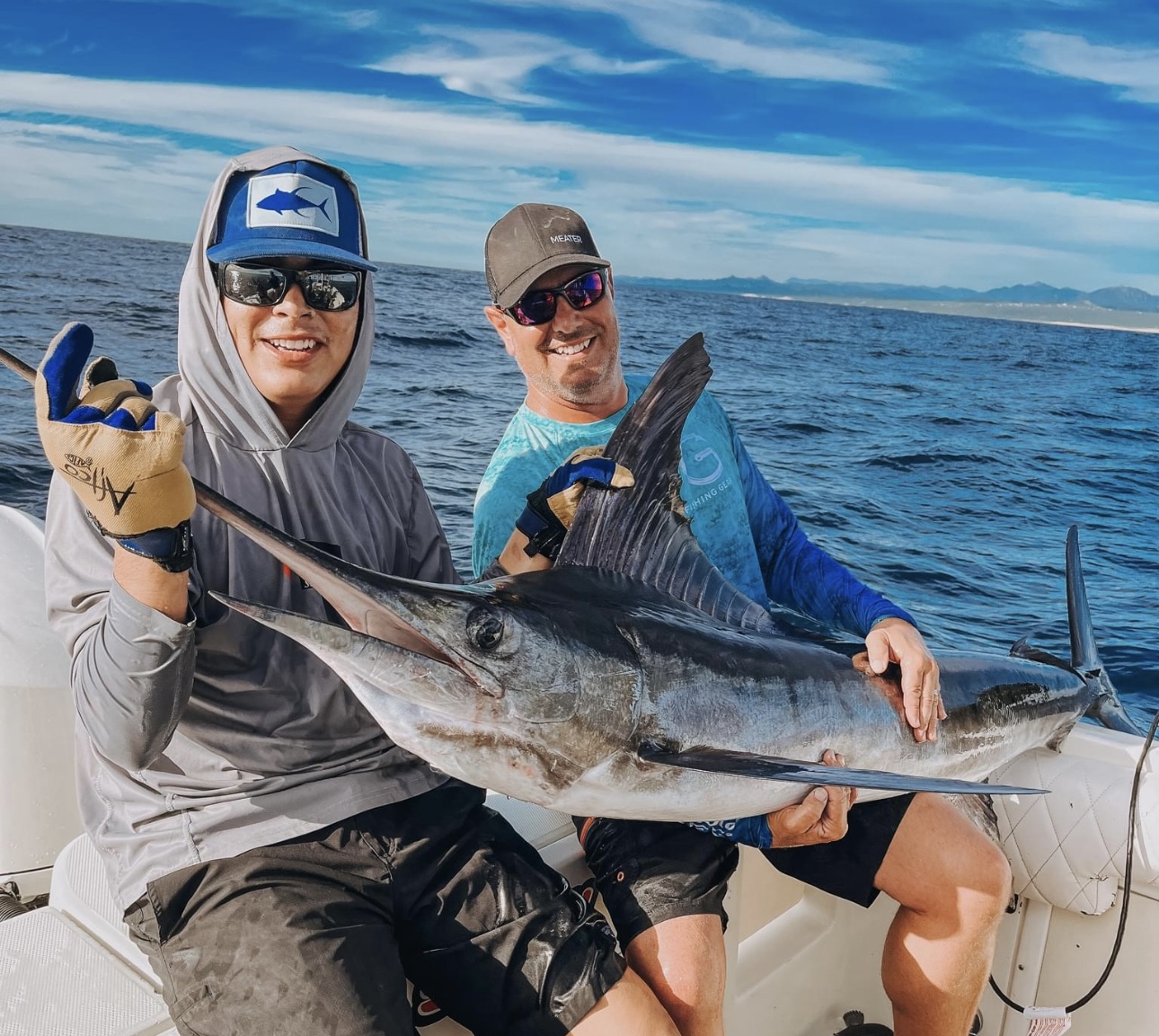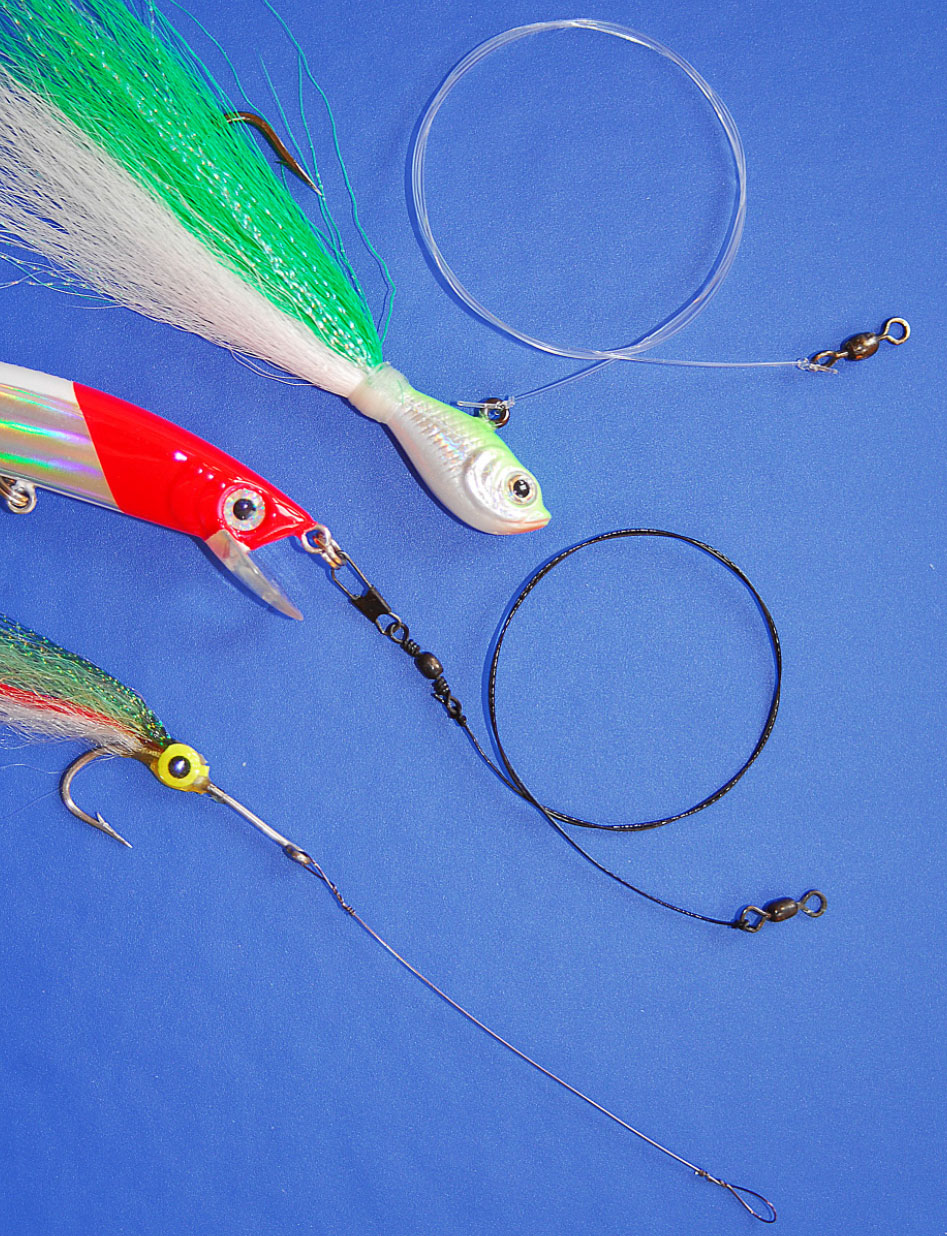Fishing involves a variety of techniques and tools, each playing a crucial role in an angler’s success. Among these components, the fishing leader holds particular importance, enhancing the effectiveness and versatility of your rig. Consequently, understanding what a fishing leader is and how to use it effectively enables you to optimize your fishing strategy. Therefore, this comprehensive guide explores the fundamentals of fishing leaders, the different types available, their applications, and proper setup tips. By delving into these aspects, you can refine your fishing techniques and increase your chances of a successful catch.
Fundamentals of Fishing Leaders
A fishing leader acts as a bridge between the main fishing line and the lure or bait. Understanding the basics of fishing leaders helps you utilize them effectively. Therefore, exploring the fundamentals is essential.
Definition and Purpose
A fishing leader is a separate piece of line that connects your main fishing line to the hook, lure, or bait. The leader serves multiple purposes, including preventing line breakage, reducing visibility, and enhancing bait presentation. Leaders are typically made of materials such as fluorocarbon, monofilament, or wire, each offering distinct advantages based on the fishing scenario. By understanding the definition and purpose of a fishing leader, you can appreciate its role in improving your fishing setup. Therefore, recognizing the significance of this component is crucial.

How Leaders Improve Fishing Success
Leaders improve fishing success by addressing common challenges faced during angling. Firstly, leaders provide abrasion resistance, protecting the main line from sharp structures, rocks, and teeth. This is especially important when targeting species with rough mouths or fishing in environments with debris. Secondly, leaders minimize line visibility, as some materials are nearly invisible underwater. This is beneficial in clear water conditions where fish can be line-shy. Thirdly, leaders allow for better bait presentation, as their properties can reduce drag and improve the natural movement of bait or lures. By understanding how leaders improve fishing success, you can optimize your rig for better results. Therefore, recognizing the value of leader lines is essential.
Different Types of Fishing Leaders
Various types of fishing leaders cater to different fishing needs and situations. Understanding these types helps you select the right leader for your setup. Therefore, exploring the different types is essential.
Fluorocarbon Leaders
Fluorocarbon leaders are popular for their low visibility and high abrasion resistance. Made from a dense material, fluorocarbon has a refractive index similar to water, making it nearly invisible underwater. This property is especially advantageous when targeting line-shy fish in clear water. Additionally, fluorocarbon is highly resistant to abrasion, protecting against potential damage from sharp structures and fish teeth. While fluorocarbon leaders can be more expensive than other options, their benefits often justify the cost for serious anglers. By understanding the properties of fluorocarbon leaders, you can select them for situations requiring stealth and durability. Therefore, recognizing the importance of fluorocarbon is crucial.
Monofilament Leaders
Monofilament leaders, made from a single strand of nylon, offer versatility and ease of use. Monofilament is known for its flexibility and stretch, which can help absorb sudden shocks and prevent line breakage. This makes it an excellent choice for targeting species with aggressive strikes or fishing in rough conditions. Monofilament leaders are also more affordable than fluorocarbon, making them accessible for anglers on a budget. However, they may not be as invisible or abrasion-resistant as fluorocarbon leaders. By understanding the properties of monofilament leaders, you can choose them for applications requiring flexibility and shock absorption. Therefore, recognizing the value of monofilament is essential.
Wire Leaders
Wire leaders are designed for situations where extreme abrasion resistance is needed, such as when targeting toothy predators like pike, muskie, and certain saltwater species. Made from materials like stainless steel or titanium, wire leaders can withstand the sharp teeth and strong jaws of these fish, preventing bite-offs. Wire leaders are available in various configurations, including single-strand, multi-strand, and coated versions. Each type offers different levels of flexibility and durability. While wire leaders are highly effective at preventing line breakage, their visibility can sometimes deter wary fish. By understanding the properties of wire leaders, you can select them for targeting aggressive, toothy predators. Therefore, recognizing the need for wire leaders is crucial.

Applications of Fishing Leaders
Fishing leaders serve various applications, catering to different fishing scenarios and techniques. Understanding these applications helps you utilize leaders effectively. Therefore, exploring common applications is essential.
Saltwater Fishing
In saltwater fishing, leaders are particularly important due to the challenging conditions and target species. Saltwater environments often feature abrasive structures like coral reefs, rocks, and wrecks, which can damage a fishing line. Additionally, saltwater species like tarpon, tuna, and sharks have sharp teeth and rough mouths, necessitating the use of robust leaders. Fluorocarbon and wire leaders are commonly used in saltwater fishing to provide both abrasion resistance and reduced visibility. By understanding the applications of leaders in saltwater fishing, you can protect your gear and improve your chances of landing strong, aggressive fish. Therefore, recognizing the importance of leaders in saltwater environments is crucial.
Freshwater Fishing
In freshwater fishing, leaders also play a vital role, especially when targeting species with specific behavioral traits or fishing in clear waters. For example, leaders can be used to present bait or lures more naturally to trout in clear streams, where fish can be particularly line-shy. Additionally, when fishing for bass in areas with heavy vegetation or cover, leaders provide extra protection against snags and abrasion. Monofilament and fluorocarbon leaders are commonly used in freshwater fishing due to their versatility and effectiveness. By understanding the applications of leaders in freshwater fishing, you can enhance your presentation and protect your tackle. Therefore, recognizing the value of leaders in freshwater scenarios is essential.
Fly Fishing
In fly fishing, leaders are fundamental to presenting the fly naturally and effectively. A typical fly fishing leader consists of several sections, including a butt section, taper, and tippet. The butt section is thicker and stiffer, providing the necessary energy transfer for casting. The taper gradually reduces in diameter, helping transition energy smoothly to the fly. The tippet is the thinnest section, providing the final connection to the fly with low visibility. Fluorocarbon and monofilament are both used for fly fishing leaders, with the choice depending on specific fishing conditions. By understanding the structure and application of leaders in fly fishing, you can achieve better presentations and more successful hookups. Therefore, recognizing the significance of fly fishing leaders is crucial.

Proper Setup and Usage of Fishing Leaders
Proper setup and usage of fishing leaders ensure their effectiveness and longevity. Understanding these techniques helps you maximize the benefits of leaders. Therefore, exploring the setup process is essential.
Tying Leader Knots
Tying secure and reliable knots is essential when setting up your fishing leader. Common knots used for connecting leaders to the main line include the Double Uni Knot, the Blood Knot, and the Albright Knot. Each knot offers different strengths and applications, so practice tying them to become proficient. Additionally, use appropriate knots for attaching hooks, lures, or swivels to the leader, such as the Improved Clinch Knot, Palomar Knot, or Loop Knot. Ensure all knots are tight and carefully trimmed to prevent slippage. By understanding the importance of tying secure knots, you can ensure the reliability of your leader setup. Therefore, recognizing the value of knot-tying skills is crucial.
Selecting the Right Leader Length
Selecting the right leader length depends on the fishing conditions and target species. In general, longer leaders provide better stealth and natural presentation, while shorter leaders offer more control and accuracy. For example, in clear water where fish are highly sensitive to line visibility, using a longer leader (6-12 feet) can increase your chances of success. Conversely, in murky water or when fishing in heavy cover, shorter leaders (2-4 feet) can provide better control and less risk of tangling. Adapt your leader length based on the specific requirements of your fishing situation. By understanding the importance of selecting the right leader length, you can optimize your setup for various conditions. Therefore, recognizing the need for adaptability is crucial.
Replacing Leaders Regularly
Regularly replacing your fishing leader is essential to maintain its effectiveness and prevent unexpected breakage. Leaders can become weakened over time due to abrasion, UV exposure, or repeated stress from catching fish. Inspect your leader before each fishing trip, looking for signs of wear, fraying, or damage. If any issues are detected, replace the leader immediately. Additionally, consider replacing leaders after each trip or significant catch to ensure optimal performance. By understanding the importance of regular leader replacement, you can avoid potential failures and maintain a reliable setup. Therefore, recognizing the value of proactive maintenance is crucial.

Addressing Common Questions About Fishing Leaders
Understanding common questions about fishing leaders provides clarity and enhances knowledge. Knowledge of these answers ensures better preparation and practice. Therefore, exploring common questions is essential.
Do I Always Need to Use a Leader?
While using a leader is beneficial in many situations, it is not always necessary. The decision to use a leader depends on factors such as target species, fishing environment, and line visibility. In clear waters with line-shy fish or when targeting species with sharp teeth, leaders provide significant advantages. Conversely, in murky waters or when using heavy braided lines for certain applications, leaders may be less critical. Assess the specific conditions and requirements of your fishing scenario to determine whether a leader is needed. By understanding when to use a leader, you can make informed decisions to optimize your setup. Therefore, recognizing the context-based need for leaders is crucial.
Can I Use Any Line as a Leader?
While you can use various types of fishing lines as leaders, choosing the appropriate material for your specific needs is essential. Fluorocarbon and monofilament lines are popular choices due to their properties, such as low visibility and abrasion resistance. Wire leaders are used for situations requiring extreme durability. It is important to select a leader material that complements your main line and matches the fishing conditions. Using the wrong line type as a leader may compromise the effectiveness of your setup. By understanding the importance of selecting the right leader material, you can ensure optimal performance. Therefore, recognizing the significance of material selection is crucial.
Addressing Common Misconceptions About Fishing Leaders
Addressing common misconceptions about fishing leaders provides accurate information and dispels unwarranted concerns. Clearing up misunderstandings ensures an informed perspective. Therefore, exploring common misconceptions is important.
Misconception: Leaders Are Only for Experienced Anglers
A common misconception is that fishing leaders are only necessary for experienced anglers. In reality, leaders offer benefits for anglers of all skill levels, from beginners to seasoned professionals. Using a leader can enhance bait presentation, protect against abrasion, and increase the chances of landing fish. These advantages apply to various fishing situations, making leaders valuable tools for all anglers. By understanding the universal benefits of leaders, you can appreciate their importance regardless of your experience level. Therefore, dispelling this misconception highlights the accessibility of leaders.

Misconception: Leaders Are Too Complicated to Use
Another misconception is that setting up and using fishing leaders is too complicated. While there are technical aspects involved, with practice and the right guidance, anyone can learn to use leaders effectively. Many resources, such as tutorials, videos, and fishing communities, offer valuable tips and step-by-step instructions. Additionally, mastering a few key knots and understanding basic principles can simplify the process. By understanding the manageable complexity of using leaders, you can approach their setup with confidence. Therefore, dispelling this myth emphasizes the attainability of leader use.
Conclusion: Enhancing Your Fishing Success with Leaders
Enhancing your fishing success involves understanding the fundamentals, types, applications, and proper setup of fishing leaders. Proper preparation, including selecting the right leader material and knot-tying skills, ensures an optimal setup.
Exploring critical aspects such as leader length, regular replacement, and addressing common questions ensures comprehensive knowledge and practice. Recognizing the importance of addressing misconceptions enhances overall confidence and effectiveness.
By engaging with these elements, you can utilize fishing leaders to optimize your rig and increase your chances of a successful catch. Therefore, whether you are a novice or an experienced angler, understanding the essential considerations and techniques for using fishing leaders offers practical and valuable insights. Embrace the opportunity to refine your fishing skills, knowing you have the knowledge and resources to effectively use fishing leaders!
